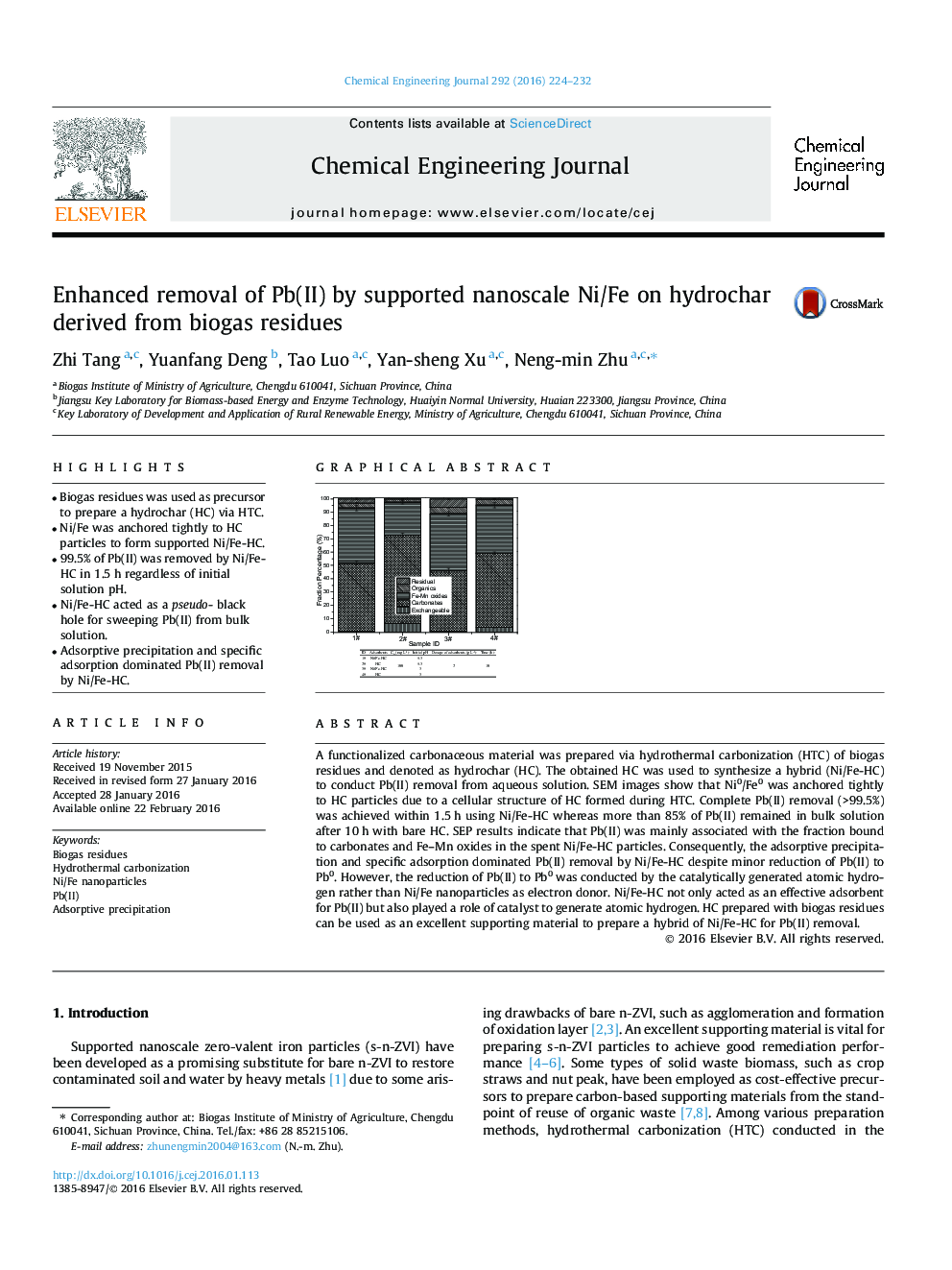| Article ID | Journal | Published Year | Pages | File Type |
|---|---|---|---|---|
| 145666 | Chemical Engineering Journal | 2016 | 9 Pages |
•Biogas residues was used as precursor to prepare a hydrochar (HC) via HTC.•Ni/Fe was anchored tightly to HC particles to form supported Ni/Fe-HC.•99.5% of Pb(II) was removed by Ni/Fe-HC in 1.5 h regardless of initial solution pH.•Ni/Fe-HC acted as a pseudo- black hole for sweeping Pb(II) from bulk solution.•Adsorptive precipitation and specific adsorption dominated Pb(II) removal by Ni/Fe-HC.
A functionalized carbonaceous material was prepared via hydrothermal carbonization (HTC) of biogas residues and denoted as hydrochar (HC). The obtained HC was used to synthesize a hybrid (Ni/Fe-HC) to conduct Pb(II) removal from aqueous solution. SEM images show that Ni0/Fe0 was anchored tightly to HC particles due to a cellular structure of HC formed during HTC. Complete Pb(II) removal (>99.5%) was achieved within 1.5 h using Ni/Fe-HC whereas more than 85% of Pb(II) remained in bulk solution after 10 h with bare HC. SEP results indicate that Pb(II) was mainly associated with the fraction bound to carbonates and Fe–Mn oxides in the spent Ni/Fe-HC particles. Consequently, the adsorptive precipitation and specific adsorption dominated Pb(II) removal by Ni/Fe-HC despite minor reduction of Pb(II) to Pb0. However, the reduction of Pb(II) to Pb0 was conducted by the catalytically generated atomic hydrogen rather than Ni/Fe nanoparticles as electron donor. Ni/Fe-HC not only acted as an effective adsorbent for Pb(II) but also played a role of catalyst to generate atomic hydrogen. HC prepared with biogas residues can be used as an excellent supporting material to prepare a hybrid of Ni/Fe-HC for Pb(II) removal.
Graphical abstractFigure optionsDownload full-size imageDownload as PowerPoint slide
